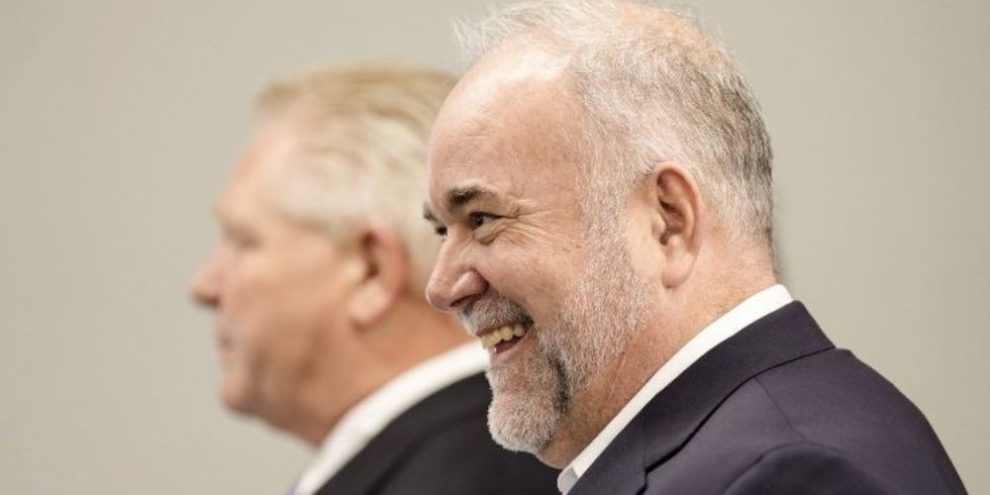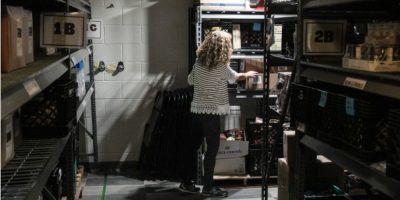
Ontario municipalities have been forced to turn down thousands of child-care spaces in the $10-a-day system because of a limit on the percentage of for-profit spaces in the province's deal with the federal government, the provincial government says.
The province has so far created less than a third of the new spaces it committed to by 2026 and Ontario Education Minister Todd Smith and the association representing the province's municipalities have sent a letter to federal Minister Jenna Sudds, asking her to lift the cap on for-profit spaces.
"While Ontario recognizes the important role that not-for-profit providers play in the child care system, these operators cannot fill the capacity alone," Smith and the Association of Municipalities of Ontario wrote.
"With waitlists so high, parents and guardians across the province are seeking quality child care for their children in their local community regardless of whether they be for-profit, not-for-profit, or home based."
In the deal with the federal government, Ontario committed — grudgingly, the letter suggests — to maintaining a ratio in the $10-a-day system of 70 per cent non-profit spaces and 30 per cent for-profit spaces. But that ratio has been artificially hampering growth of the national child-care system in Ontario, the province and its municipalities say.
Barrie's News Delivered To Your Inbox
By submitting this form, you are consenting to receive marketing emails from: Central Ontario Broadcasting, 431 Huronia Rd, Barrie, Ontario, CA, https://www.cobroadcasting.com. You can revoke your consent to receive emails at any time by using the SafeUnsubscribe® link, found at the bottom of every email. Emails are serviced by Constant Contact
Peel Region has been identified by the province as needing the most new child-care spaces, but has had to turn down more than 2,000 potential spaces under the $10-a-day program because the operators were for-profit, the letter says.
Meanwhile, waitlists have ballooned since the introduction of the program, which has already seen fees cut in half for parents at participating child-care centres and they are set to be lowered further to an average of $10 a day.
In Kawartha Lakes, children are set to spend an average of 6.4 years waiting for licensed child care, up from an average of 3.7 years before Ontario joined the program. In the Region of Waterloo, there has been a 115 per cent increase in the number of children on the waitlist, with 9,200 kids now in the queue. Ottawa's waitlist has increased more than 41 per cent.
A spokesperson for Sudds, the minister of families, children and social development, said the minister would be responding to Smith to continue discussions on how Ontario can meet its space creation targets.
"When creating this Canada-wide Early Learning and Child Care System, our priority was and remains to increase access to high-quality, affordable, flexible and inclusive child care for families across Canada," Genevieve Lemaire wrote in a statement.
"As the last province to sign on, Ontario has made progress, however, as all of us can agree, more work needs to be done."
Ontario's deal committed the province to 86,000 new child-care spaces since 2019, though the deal was signed in 2022. But so far while there have been about 51,000 new spaces since 2019 for the kids five and under, the age group covered by the national program, only 25,500 of those are within the $10-a-day system.
Child-care operators and advocates have also blamed Ontario's formula for how it doles out funding for stifling growth — they say it is not covering their costs and the province has promised a revised formula soon — as well as the compensation levels for child-care staff.
Ontario has set a wage floor for ECEs in centres participating in the program at $23.86 an hour, an amount that is set to rise by $1 an hour each year until 2026. That is higher than the level initially set by the province, but advocates say the level is still too low to make a meaningful difference in the province's recruitment and retention crisis.
Ministry officials have warned the province could be short 8,500 ECEs by 2026, and advocates and operators say that without the ability to better attract and keep ECEs, there will be no one to staff the spaces that do get created.
Carolyn Ferns is the policy co-ordinator for the Ontario Coalition for Better Child Care, which advocates for a non-profit and public child-care system, and she said Ontario needs to address its own funding formula and workforce issues before seeking to expand for-profit daycares.
Operators are having a hard time expanding since they're struggling both to make ends meet under the current funding formula and attract enough workers to staff existing rooms, let alone opening new ones, she said.
"Why would you build an extension on your house when your house is on fire?" Ferns said.
"I think the Ford government needs to look at their implementation of (the $10-a-day system) in Ontario and getting that right, and not going down a road of selling off the child-care system to the highest bidder."
Ontario's letter says for-profit operators in the province are largely small, women-owned businesses, with 96 per cent of them operating one or two sites.
This report by The Canadian Press was first published July 9, 2024.





